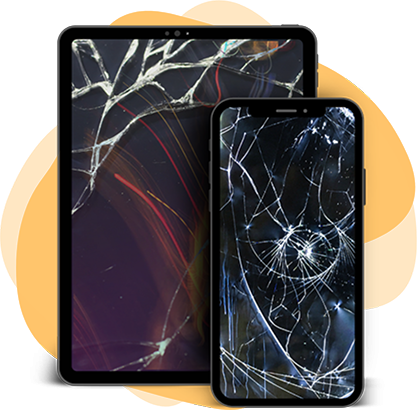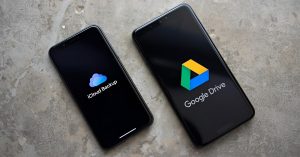No products in the cart.
Foldable Phones Pros and Cons Analysis
You’re probably wondering if foldable phones live up to the buzz and are worth the investment. On one hand, they captivate with their ability to morph from a phone into a tablet, offering a superior multitasking experience. On the other hand, the steep price and possible durability concerns might make you think twice. With apps still catching up to this technology, it’s crucial to weigh these elements carefully. When analyzing Foldable Phones Pros and Cons, can the benefits tip the scale over the drawbacks? As you delve into this fascinating topic, consider how the latest foldable models stack up and what the future might hold for this groundbreaking technology.
What Makes Foldable Phones Unique?

You can’t overlook the distinctive nature of foldable phones, starting with their flexible screen technology that transforms your device from a pocket-friendly phone to a spacious tablet.
Apps play an essential role here, as they optimise your multitasking experience by adapting to the dynamic screen changes.
The hinge mechanism, whether seen as an engineering marvel or a marketing gimmick, is central to the phone’s unique appeal and functionality.
Understanding Foldable Screen Technology
Foldable screen technology sets foldable phones apart by harnessing flexible OLED displays, allowing the screens to bend without breaking and providing a unique and dynamic user experience.
You’ll appreciate the advanced mechanics that enable seamless folding mechanisms.
Join the foldable revolution with:
- Multitasking capabilities on expansive screens
- Durability against wear with protective layers
- Improved battery efficiency
- Propped viewing angles
- Innovative design aesthetics
The Role of Apps in Optimising the Foldable Experience
In the evolving landscape of mobile technology, apps play a pivotal role in optimising the unique experience that foldable phones offer.
With foldable smartphones, you’re able to enhance productivity by running multiple apps on adaptable screen configurations.
As foldable-friendly applications grow, content consumption becomes more immersive.
Your user feedback is essential for app optimisation, ensuring these devices cater to your needs and foster a sense of community.
The Hinge Mechanism: Engineering Marvel or Marketing Gimmick?
As apps optimise the foldable experience, another standout feature of these devices comes into focus: the hinge mechanism.
In foldable smartphones, it’s more than just a marketing gimmick. With advanced engineering techniques, these hinges offer:
- Flexibility and robustness
- Durability through tested lifespans
- Smooth shifts for hands-free activities
- Innovative hinge designs with minimal creasing
- Enhanced durability with multi-axis hinges
You’re part of a tech-savvy community embracing this engineering marvel.

Don't Let A Broken Phone Hold You Back
Look no further! Our comprehensive price list covers all major brands and models, ensuring that you can easily find the repair cost for your specific phone. Pleas check our price list for details
Are Foldable Phones a Worthwhile Investment?

When considering whether foldable phones are a worthwhile investment, you’ll want to weigh their unique features against traditional smartphones.
They offer enhanced multitasking and a sleek design, but come with higher prices and potential durability issues.
Are these innovative devices overpriced compared to standard models, or do their benefits justify the cost?
Comparing Foldable Phones with Traditional Smartphones
Many consumers find themselves at a crossroads when choosing between foldable phones and traditional smartphones.
Foldable smartphones offer a larger screen in a compact form but come with a higher price, durability challenges, and shorter battery life.
Meanwhile, traditional smartphones are more affordable and have a mature app ecosystem.
- Larger screens for multitasking
- Expensive phone investment
- Durability concerns
- Shorter battery life
- Evolving app ecosystem
Foldable Phones Pros and Cons
In the evolving market of foldable devices, understanding the benefits and drawbacks is essential to making an informed decision.
Key Advantages and Disadvantages of Foldable Devices
In considering whether foldable phones are a worthwhile investment, it’s important to weigh their key advantages and disadvantages.
Foldable smartphones offer versatility with flexible screens that combine phone and tablet functions, appealing to those seeking innovative tech.
However, durability is a concern, and higher price points may deter budget-conscious buyers.
Battery life and app optimisation remain challenges compared to traditional smartphones, potentially impacting user satisfaction.
Are Foldable Phones Overpriced Compared to Standard Models?
Foldable phones, often priced over $1,000, certainly seem expensive compared to standard models that range from $300 to $800.
Yet, you’re drawn to:
- The allure of premium foldable devices
- Cutting-edge advanced technology
- Innovative design that turns heads
- Multitasking capabilities for the modern user
- Durability concerns, a shared worry
Consider if the value proposition aligns with your tech-savvy lifestyle.
Find the best foldable phones for 2025 in this guide to help make an informed decision when comparing these devices.
How Does the Samsung Galaxy Z Series Measure Up?

When you’re considering foldable phones, the Samsung Galaxy Z Series stands out with models like the Galaxy Z Fold 4 and Galaxy Z Flip 4.
How does Samsung compare to competitors like the Google Pixel Fold and Oppo Find N2 Flip?
Let’s explore what distinguishes the Galaxy Z Series from the rest regarding design, technology, and user experience.
A Close Look at Galaxy Z Fold 4 and Galaxy Z Flip 4
Although foldable phones have sparked a revolution in smartphone design, the Samsung Galaxy Z Fold 4 and Galaxy Z Flip 4 stand out as benchmarks in this evolving category. They offer groundbreaking folding displays and superior multitasking capabilities.
However, durability concerns persist, and a premium price point may deter some. Their compact design appeals to those seeking innovative and versatile foldable smartphones.
- 7.6-inch Dynamic AMOLED display
- Compact 6.7-inch AMOLED main screen
- Advanced multitasking features
- Flexible screens and hinges
- Premium price point
Comparing Samsung with Competitors: Google Pixel Fold and Oppo Find N2 Flip
Samsung’s Galaxy Z Series sets the bar high in the foldable phone market, but how does it compare to competitors like the Google Pixel Fold and Oppo Find N2 Flip?
Foldable smartphones are expected to excel in durability and app optimisation.
Samsung and Google’s devices face similar battery life issues, while repair costs remain a concern.
The Galaxy Z Flip4 often stands out with its optimised app ecosystem.
What Distinguishes the Samsung Galaxy Z Series from the Rest?
With the competition heating up among foldable phones, the Samsung Galaxy Z Series carves out a distinct niche that sets it apart from the rest.
You’ll find:
- Advanced hinge technology ensuring smooth folding
- Premium build quality with vibrant AMOLED inner displays
- Multitasking capabilities ideal for productivity
- Enhanced camera systems for unique photography angles
- Extensive software updates boosting device longevity
The Galaxy Z Fold-series truly stands out.

Not Sure About A Repair You Need?
Whether you’re dealing with a cracked screen, battery issues, or software glitches, we’ve got you covered. Get a FREE quote today!
What Challenges Do Foldable Phones Face?

When you’re considering foldable phones, it’s essential to weigh the challenges they bring.
You might find the crease in the screen bothersome, whether it’s a cosmetic issue or impacts functionality.
Additionally, durability, battery life, and software optimisation are key areas where these devices still need improvement.
The Crease Issue: Cosmetic or Functional Problem?
The crease issue in foldable phones sparks a debate about whether it’s merely cosmetic or a functional problem.
You’re probably wondering if the crease:
- Impacts your user experience with foldable displays.
- Raises durability concerns over time.
- Affects touch sensitivity, leading to accidental misinputs.
- Stands as a visible cosmetic flaw.
- Is addressed by innovative hinge designs to reduce its impact.
Each factor shapes how you perceive this technological wonder.
Durability and Longevity of Foldable Devices
As you explore the world of foldable phones, durability and longevity often emerge as significant concerns.
Foldable smartphones, with their fragile flexible screens and intricate hinge mechanisms, face challenges in reliability. Most lack robust dust and water resistance, adding to wear risks.
Screen wear and hinge reliability vary among users, emphasising careful handling. Manufacturers endeavour to enhance durability, but concerns linger, especially with older models.
Battery Life and Performance Concerns
Imagine you’re using a foldable phone with its stunning, expansive screen, but there’s a catch—battery life struggles to keep up with your daily demands.
Larger screens mean increased power consumption, leading to performance concerns:
- Frequent recharging needs
- Battery optimisation challenges
- Impact on device longevity
- Multitasking drains power
- Variability in usage patterns
Foldable devices aim for improvements, but battery life remains a key concern.
Software Optimisation: Are Foldables Ready for Seamless Use?
Battery life isn’t the only hurdle foldable phones face; software optimisation presents its own set of challenges.
Flip phones and foldable smartphones grapple with compatibility issues as apps struggle with unique screen configurations, leading to inconsistent user experiences.
For foldable technology to thrive, developers must enhance apps for these devices.
As a user craving seamless integration, you’ll appreciate these improvements for a more cohesive experience.
The Future of Foldable Phones

You’re about to witness exciting innovations in foldable screen technology, with advancements promising greater durability and flexibility.
Keep an eye on key trends in 2023 and beyond, as brands like OnePlus Open push the boundaries of what’s possible.
These developments will shape the smartphone market’s future, influencing both design and functionality for years to come.
Flexible AMOLED screens have revolutionised smartphone design, allowing for dual functionality.
Innovations in Foldable Screen Technology: What’s Next?
Some might wonder what lies ahead for foldable phone technology, as innovations continue to reshape this dynamic market.
You’ll find foldable mobile phones with folding screens that boast ultra-thin glass, elevating durability and visual appeal. Energy efficiency is improving, making flex mode more appealing. Applications for foldable screens are expanding, promising exciting experiences.
- Advanced hinge mechanisms
- Flexible OLED displays
- Higher refresh rates
- Improved touch sensitivity
- Enhanced battery life
Key Trends to Watch in 2023 and Beyond: OnePlus Open and More
As foldable phone technology continues to advance, several key trends are shaping the future of this exciting market.
You’ll see many foldable smartphones with improved durability, reducing the cost of repair.
New folding designs, like the OnePlus Open, rival Samsung’s offerings.
The best foldable models will feature innovative external screens, ensuring seamless multitasking even as they fold in half.
Expect more accessible pricing and enhanced user experiences.
Foldables and Their Long-Term Impact on the Smartphone Market
Often seen as a cutting-edge innovation, foldable phones are poised to reshape the smartphone market considerably.
You’ll witness a shift in how we view screen size and functionality compared to traditional phones.
As foldable smartphones evolve:
- Enhanced inner and outer screen experiences
- Improved durability over time
- Expanding app optimisation
- Growing shipments and consumer interest
- Competition driving better pricing
Phones may redefine your tech experience.
Final Thoughts
Foldable phones offer an exciting blend of versatility and chic design, which appeals to tech lovers like yourself. Picture a device that can transform from a compact phone into a mini-tablet, providing you with flexibility at your fingertips. Yet, before diving in, consider their steep price tags, potential durability hiccups, and the occasional app that might not play nicely with the foldable format. Imagine buying a shiny new gadget only to find the screen isn’t as robust as you’d hoped, or your favourite app looks a bit wonky when unfolded.
As technology marches forward, these phones may become more affordable and robust, potentially ironing out these kinks. Keep your ears to the ground in this rapidly changing market to see how it shapes the future of mobile devices. Think of it like the evolution of cars; once a luxury, now a necessity. So, if you’re contemplating investing in a foldable phone, weigh these pros and cons like you would when choosing between a classic novel and a trendy bestseller.

Book Online &
Save $10 on Your Mobile Phone Repair
By booking online, you get an exclusive $10 discount on your repair cost. Don’t miss out on this special offer!
Frequently Asked Questions
The main advantages of a folding phone like the Samsung Galaxy Z Flip include compactness, as it can easily fit in pockets when folded, a larger screen when opened, and innovative design features. It also allows for multitasking and enhanced viewing experiences, making it suitable for various activities such as watching videos or taking selfies.
The drawbacks of foldable smartphones include their significantly more expensive price point compared to traditional candy bar smartphones, potential durability concerns with the inner screen, and the fact that some apps may not be fully optimised for foldable displays. Additionally, folding and unfolding mechanisms might wear over time.
The Samsung Galaxy Z Fold is designed to open like a book, providing a large inner screen for multitasking and productivity, whereas the Samsung Galaxy Z Flip folds in half like a traditional flip phone, making it more compact and portable. Each model caters to different user needs and preferences.
Yes, you can use regular apps on a folding phone like the Samsung Galaxy Z Fold. However, some apps may not be optimised for the unique screen layout and size of foldable smartphones, which can affect usability and performance.
Whether it is worth buying a foldable smartphone depends on your personal preferences and usage habits. If you value innovative design, a larger display for multitasking, and are willing to invest in a device that is significantly more expensive than traditional options, then a foldable smartphone could be a good choice for you.
The lifespan of the screens on foldable phones like the Samsung Galaxy Z Fold can vary, but they are generally designed for durability. Most manufacturers, including Samsung, provide warranties and specify a certain number of folds the device can withstand. Regular care and avoiding excessive pressure can help extend the lifespan of the phone screens.
Foldable phones such as the Samsung Galaxy Z Flip often have comparable camera features to traditional smartphones, but they might offer unique advantages like the ability to take hands-free selfies using the phone’s folding design. However, the overall camera quality can vary between models, so comparing specific camera specifications is essential.
Yes, there are specific accessories for foldable phones, including protective cases tailored for the folding design, screen protectors that accommodate the unique screen curvature, and charging docks that support the phone’s form factor. It’s advisable to choose accessories that are specifically made for your model, like the Galaxy Z Fold or Z Flip, to ensure compatibility.






